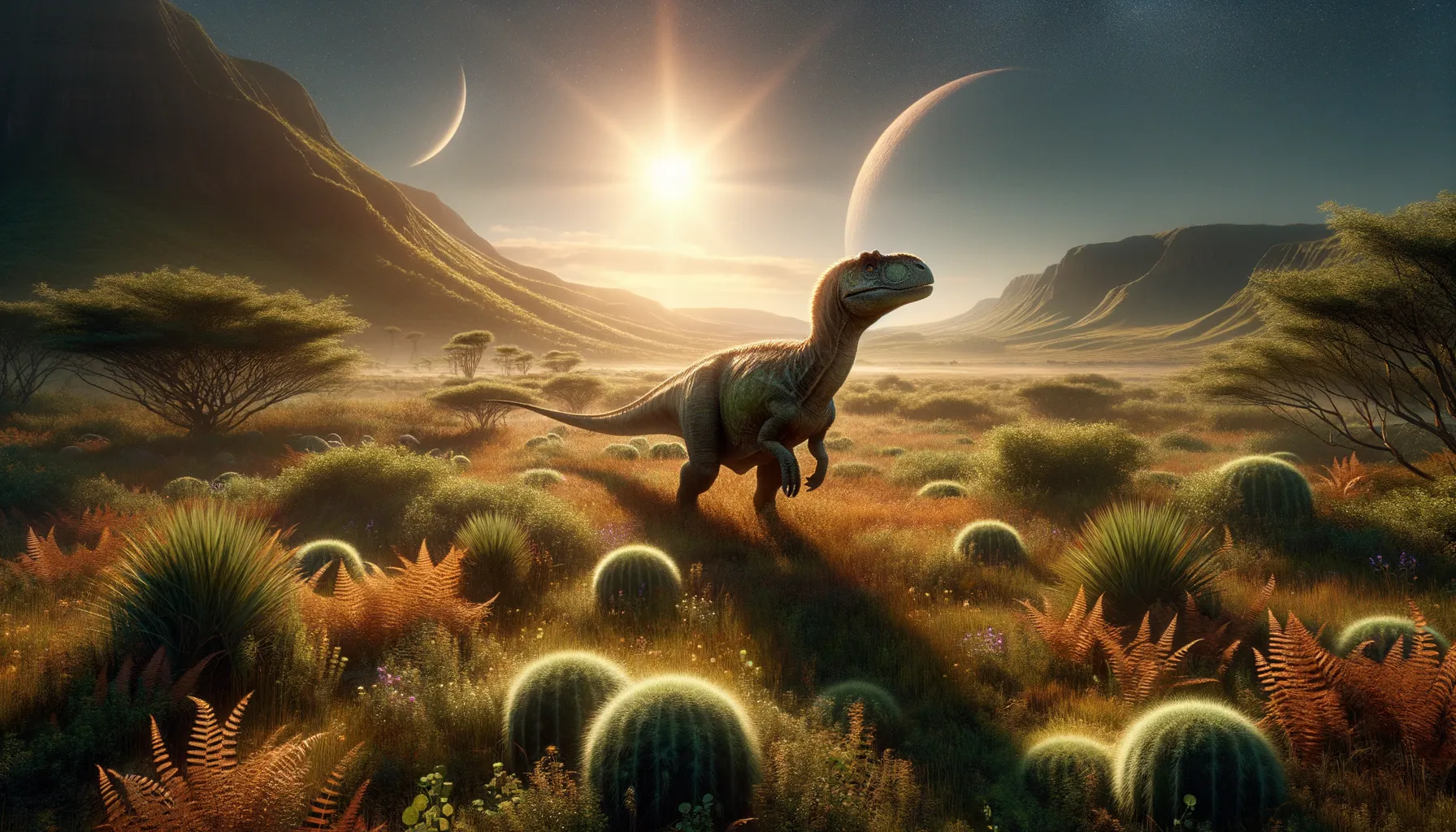
Nanningosaurus
Gentle grazer of the ancient Cretaceous woods.
Period
Cretaceous
Length
About 5 to 6 meters long.
Height
Roughly around 2 meters at the hips.
Weight
Approximately 400 to 500 kilograms.
Nanningosaurus was a small, herbivorous dinosaur from the Late Cretaceous period. It roamed the prehistoric landscapes of what is now southern China. With a physique built for grazing, it shared its environment with a range of other fascinating species. This dinosaur provides key insights into the diversity of ecosystems during its time, offering paleontologists valuable information about the evolutionary path of ornithopods.
Diet
Nanningosaurus primarily fed on plants, as suggested by its teeth and jaw structure. Its diet would have consisted of low-lying vegetation, helping to maintain the ecosystem balance by controlling plant growth.
Hunting
Being a herbivore, Nanningosaurus did not engage in hunting behaviors. Instead, it foraged for food in the lush environments, using its keen senses to locate the most nutritious plants.
Environmental challenges
Living during the Late Cretaceous, Nanningosaurus faced challenges such as climate changes and competition for food resources. Predators also posed a threat, requiring the dinosaur to remain constantly alert. Seasonal variations would have influenced the availability of certain plant types, making migration or adaptation necessary for survival.
Speed
Relatively slow due to its small size and herbivorous nature.
Lifespan
Estimated to live for several decades.
First discovery
Discovered in Guangxi, China, during the early 2000s.
Fun Facts
- Nanningosaurus was a dinosaur that lived about 70 million years ago during the Late Cretaceous period.
- This dinosaur's fossils were first discovered in the city of Nanning, located in southern China, which is how it got its name.
- Nanningosaurus was a plant-eater, known as a herbivore, and likely ate low-lying vegetation.
- It was part of a group called hadrosaurids, which are often referred to as duck-billed dinosaurs because of their flat, beak-like mouths.
- Although not much is known about Nanningosaurus, it likely had similar characteristics to other hadrosaurids, like walking on both two and four legs.
- The discovery of Nanningosaurus helps scientists understand more about the diversity of dinosaurs in ancient Asia.
- Nanningosaurus adds to the list of unique dinosaurs found in China, indicating the region was a hotspot for dinosaur biodiversity.
Growth and Development
Nanningosaurus likely experienced rapid growth in its early years to reach a size that could deter predators. Like many dinosaurs, its growth rates would have tapered off as it reached maturity. Its development would have been influenced by environmental factors, including food availability and climate.
Habitat
This dinosaur lived in warm, lush environments with abundant plant life, such as forests and floodplains. The Cretaceous landscape offered plenty of resources for herbivores. Sparse open areas within its habitat allowed it to travel and graze with ease.
Interaction with other species
Nanningosaurus may have coexisted with both predators and other herbivores, leading to various interactions. While it competed with other herbivores for food, its presence might have deterred certain predators. Cooperative behaviors with other species are possible, especially for protection.
Natural lifespan
Nanningosaurus likely lived for several decades, assuming it reached adulthood.
Reproduction
Nanningosaurus reproduced by laying eggs, as most dinosaurs did. Nesting sites may have been communal, providing some form of protection for the young. Parental care is a possibility, though specific behaviors remain speculative.
Social behaviour
Nanningosaurus likely exhibited social behaviors such as group foraging and mutual protection. Herd living could have provided advantages against predators. Communication through vocalizations or visual signals might have been essential for group cohesion.
Fossil locations
Fossils of Nanningosaurus have been primarily discovered in the Nanning region of Guangxi, China. These findings contribute significantly to our understanding of Late Cretaceous fauna. Fossil evidence helps map the distribution and migration patterns of this dinosaur.
